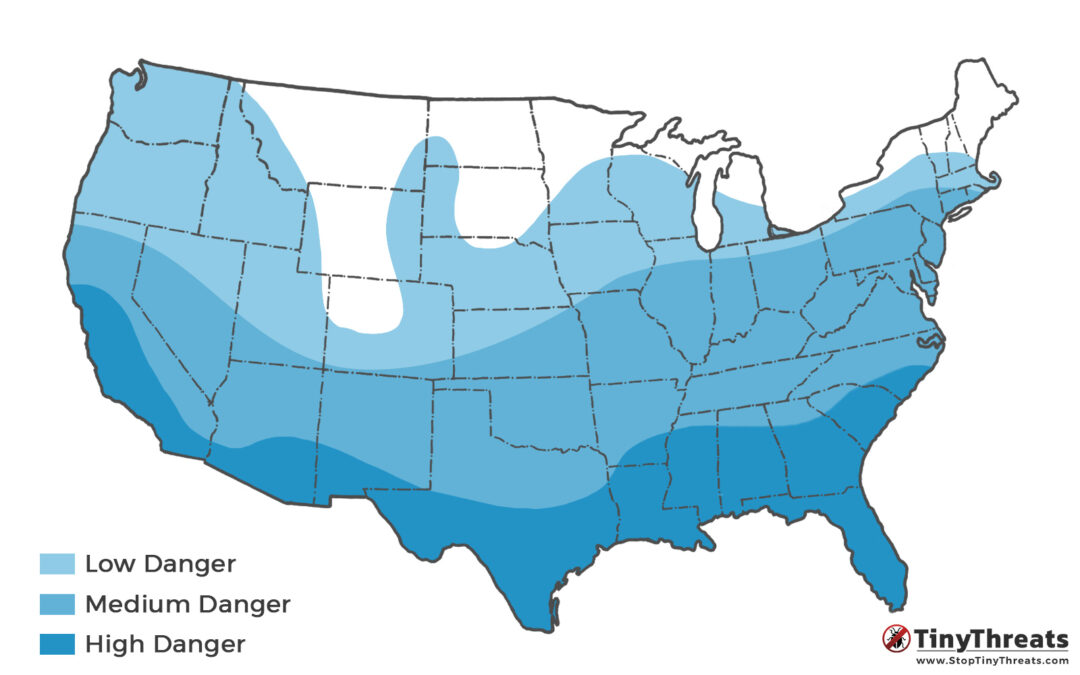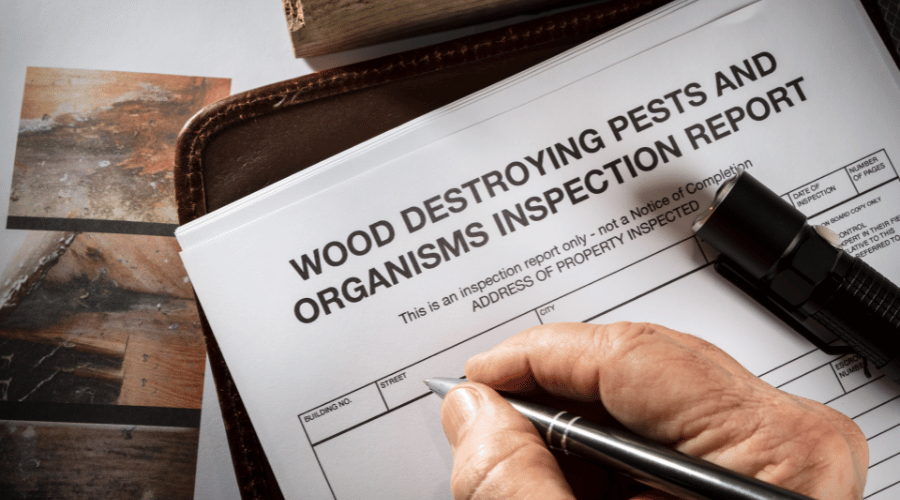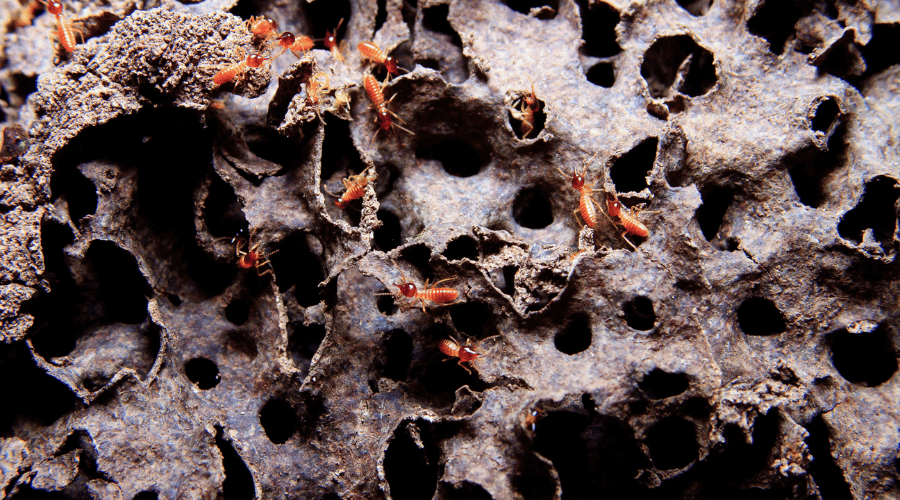Using the heat of a hot summer day to kill termites sounds like a simple, cost-effective solution, but is sadly not very viable.
You need at least 110°F (43°C) to kill termites, and even then, it will take many hours or even days.
Professional heat treatment can be a good alternative to fumigation with pesticides, but that goes up to 130°F, far beyond what sunlight offers in most parts of the world.
Table of Contents
The Temperature that Kills Termites
Termites are cold-blooded creatures and are unable to regulate temperature. This makes them vulnerable to high heat or freezing cold. But there is no exact deadly temperature – it’s a range.
Termites start suffering at temperatures above 95°F (35°C), while 130°F (54°C) kills them within about one hour.
At lower temperatures than 130°F, termites will take longer to die, but are still affected heavily by the heat.
The exact resistance to hot weather and heat depends on the species of termites, though. Subterranean termites live underground where they can easily escape the heat on hot days, while other species are more used to exposure to heat, and thus more resilient.
Since heat is generally safe and, if used correctly, can kill without exception, heat treatment can be a great choice to fight off a termite infestation.
However, natural sources of heat such as sunlight and hot summer days are usually ineffective since termites have had thousands of years of evolution to learn to survive those.

Termites have evolved to survive heavy heat waves, so a bit of sunlight is not enough to wipe them out.
How Termites escape the heat
Since termites die in high temperatures, they have their own ways of protecting themselves against this fate.
Subterranean termites have it easiest: They can simply burrow deep underground, where the hot summer heat cannot reach them.
They also seem to be uniquely adapted to surviving in hot climate. Researchers found that subterranean species can sense heat on the surface even while underground – and more importantly, sense cool, shadowy ground where it’s safe to surface.
Dampwood and drywood termites follow a similar approach: They burrow deep into the wood they are infesting. This also keeps them further away from sunlight and heat.
Within your house, they are generally safe from outside heat. Only termites in outdoor structures like patios, decks, or in furniture like chairs and tables, may be expelled by the hot summer sun.
Benefits of Heat Treatment (and what can go wrong)
Heat treatment works similar to fumigation, but faster, safer, and potentially more effective. Instead of using pesticidal gas, the house is insulated and heated up to around 130°F (54°C) for about 2 hours. After that, all termites should be dead.
The biggest benefits of heat treatment are:
- It’s faster than fumigation – usually completed in 6-8h, rather than 3+ days for tenting/fumigation.
- It uses no pesticides, thus leaving no potentially harmful residue
- Heat kills termite eggs, while fumigation often doesn’t
- Heat also kills bacteria, viruses, and mold in your house, essentially disinfecting the entire home
- The high temperatures are also effective against many other common pests such as bed bugs, ants, or other wood-boring beetles
However, there are downsides:
- The high heat may damage some wood, causing excessive dryness, cracks, or even breakage
- Subterranean termites are unaffected, as their colony is not in your home but far beneath it in the soil
In the end, it’s up to your chosen pest control company to assess the situation. Not every termite infestation can or should be exterminated with heat treatment. Sometimes, it may not be effective enough, in other situations, there may be too much risk of causing damage to your home.
Can you Kill Termites with only Sunlight?
If you find termites in furniture, putting it out in the sun for a bit sounds like a great solution – but it is unlikely to work. Unless you’re in a very hot zone during the peak of summer, the temperatures will likely not be enough to kill termites.
If temperatures do reach 100 degrees Fahrenheit or more, direct exposure to sunlight for an entire day may prove quite effective, though.
However, termites in furniture are usually the smallest problem. Unlike other pests like bed bugs, they only spread as a colony. Individual termites cannot exist on their own.
So if you find termites in a piece of furniture, there is a nest either in the piece itself, or in your house.
If you recently bought the object, there is a chance that there were some termites in it, but without a colony, they will most likely die on their own. Since only the queen and king can reproduce, a few worker termites on their own are not able to start an infestation.
If you are set on a DIY attempt, consider adding essential oils to improve your odds. One study found that essential oils – specifically Wintergreen Oil – doubled the mortality rate of termites affected by heat. Apply the oil to wood as a spray, diluted to about 5-10% in water. Then set it out into the sun and hope for the best.
Conclusion
While heat treatment can be a very effective way to stop a termite infestation in your home, natural heat from sunlight is unlikely to be any help against an active termite colony.
Individual furniture or pieces of wood might be safe in direct sunlight during the day, but this will rarely be helpful.
If you want to find DIY treatment that works, consider using borax to kill termites, or orange oil against termites.




